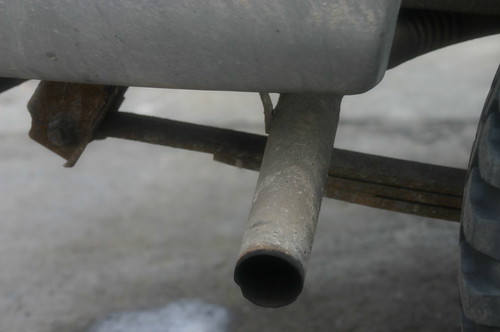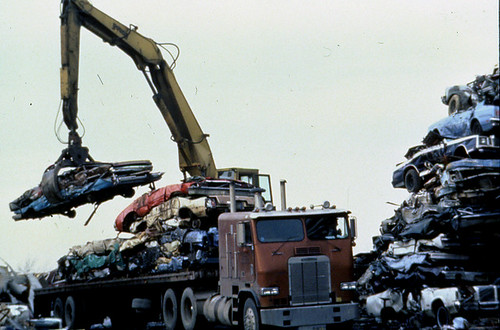GAO Report on Aviation and Climate Change Says Aircraft Emissions Expected to Grow, but Technological and Operational Improvements and Government Policies Can Help Control Emissions
(Source: Government Accountability Office)
Aircraft emit greenhouse gases and other emissions, contributing to increasing concentrations of such gases in the atmosphere. Many scientists and the Intergovernmental Panel on Climate Change (IPCC)–a United Nations organization that assesses scientific, technical, and economic information on climate change–believe these gases may negatively affect the earth’s climate. Given forecasts of growth in aviation emissions, some governments are taking steps to reduce emissions.
In response to a congressional request, GAO reviewed:
(1) estimates of aviation’s current and future contribution to greenhouse gas and other emissions that may affect climate change;
(2) existing and potential technological and operational improvements that can reduce aircraft emissions; and
(3) policy options for governments to help address commercial aircraft emissions.
GAO conducted a literature review; interviewed representatives of government agencies, industry and environmental organizations, airlines, and manufacturers, and interviewed and surveyed 18 experts in economics and aviation on improvements for reducing emissions from aircraft. GAO is not making recommendations. Relevant agencies provided technical comments which we incorporated as appropriate and EPA said emissions standards can have a positive benefit to cost ratio and be an important part of policy options to control emissions.
According to IPCC, aviation currently accounts for about 2 percent of human-generated global carbon dioxide emissions, the most significant greenhouse gas–and about 3 percent of the potential warming effect of global emissions that can affect the earth’s climate, including carbon dioxide. IPCC’s medium-range estimate forecasts that by 2050 the global aviation industry, including aircraft emissions, will emit about 3 percent of global carbon dioxide emissions and about 5 percent of the potential warming effect of all global human-generated emissions. Gross domestic product growth is the primary driver in IPCC’s forecasts. IPCC also made other assumptions about future aircraft fuel efficiency, improvements in air traffic management, and airport and runway capacity. IPCC’s 2050 forecasts for aviation’s contribution to global emissions assumed that emissions from other sectors will continue to grow.
If other sectors make progress in reducing emissions and aviation emissions continue to grow, aviation’s relative contribution may be greater than IPCC estimated; on the other hand, if other sectors do not make progress, aviation’s relative contribution may be smaller than estimated. While airlines currently rely on a range of improvements, such as fuel-efficient engines, to reduce emissions, some of which may have limited potential to generate future reductions, experts we surveyed expect a number of additional technological, operational, and alternative fuel improvements to help reduce aircraft emissions in the future. However, according to experts we interviewed, some technologies, such as advanced airframes, have potential, but may be years away from being available, and developing and adopting them is likely to be costly.
In addition, according to some experts we interviewed, incentives for industry to research and adopt low-emissions technologies will be dependent to some extent on the level and stability of fuel prices. Finally, given expected growth of commercial aviation as forecasted by IPCC, even if many of these improvements are adopted, it appears unlikely they would greatly reduce emissions by 2050. A number of policy options to address aircraft emissions are available to governments and can be part of broader policies to address emissions from many sources including aircraft. Market-based measures can establish a price for emissions and provide incentives to airlines and consumers to reduce emissions. These measures can be preferable to other options because they would generally be more economically efficient. Such measures include a cap-and-trade program, in which government places a limit on emissions from regulated sources, provides them with allowances for emissions, and establishes a market for them to trade emissions allowances with one another, and a tax on emissions. Governments can establish emissions standards for aircraft or engines. In addition, government could increase government research and development to encourage development of low-emissions improvements.
Click here to download the entire report.



 In an interview with ACE, a leading automotive club representing the interests of 550.000 Germans, the Environment Minister Sigmar Gabriel has taken a clear stance in favour of CO2 in the currently hotly debated question of which refrigerant to choose for future car air conditioning systems:
In an interview with ACE, a leading automotive club representing the interests of 550.000 Germans, the Environment Minister Sigmar Gabriel has taken a clear stance in favour of CO2 in the currently hotly debated question of which refrigerant to choose for future car air conditioning systems:








 At a recycling plant in San Pedro and five other similar operations around California, giant shredding machines annually reduce 1.3 million junk cars, refrigerators and other appliances into fist-sized chunks of metal.
At a recycling plant in San Pedro and five other similar operations around California, giant shredding machines annually reduce 1.3 million junk cars, refrigerators and other appliances into fist-sized chunks of metal.